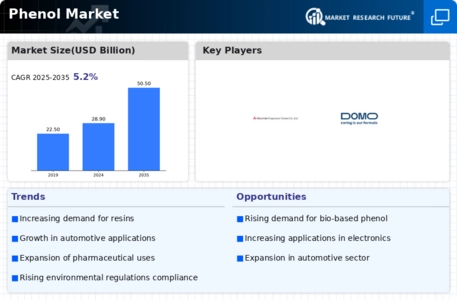Market Analysis
In-depth Analysis of Phenol Market Industry Landscape
Phenol market dynamics are influenced by dynamic and complex influences. Phenol market dynamics revolve around supply and demand. Using phenol to make phenolic resins, epoxy resins, polycarbonates, and medicines drives phenol demand. Phenol demand is high as automotive, electronics, and construction grow. However, raw material availability, production capacity, and supply chain geopolitics affect supply dynamics.
Geopolitics shape the Phenol market. Oil prices, trade disputes, and regional wars can affect raw material availability and pricing, affecting Phenol production costs. Country trade rules and restrictions can also affect Phenol flow across borders, affecting market dynamics. Global geopolitics are actively monitored by Phenol market participants to determine dangers and opportunities.
Phenol markets are also volatile due to regulatory changes. Environmental restrictions, particularly those on emissions and waste disposal, can affect output and encourage sustainable behaviors. Regulatory approvals for Phenol usage in healthcare and agriculture can further boost market growth. Market actors must adapt to changing regulations to stay compliant and competitive.
Technological advances also drive the Phenol market. Research and development improves industrial processes and makes them greener. New innovations can improve Phenol quality and broaden its applications, impacting market trends and giving competitors a competitive edge. Staying ahead of technology advances gives companies who engage in R&D an edge.
Global economic factors also affect the Phenol market. Phenol demand is affected by economic growth, industrial production, and consumer expenditure. Phenol demand rises in emerging economies with increasing industrialization. On the other hand, recessions can temporarily lower demand. Economic factors are linked to the phenol market, therefore market participants must track them to predict trends.





Leave a Comment